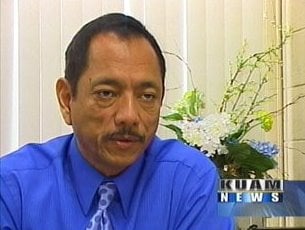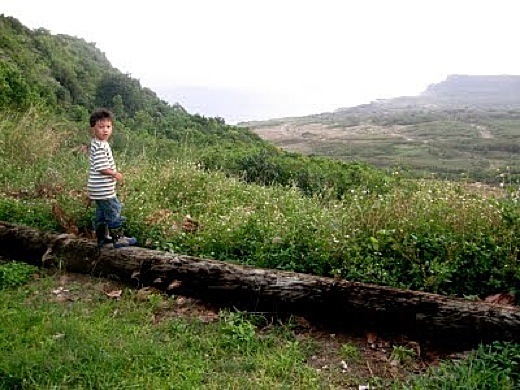I first met Kyle Kajihiro and Terri Keiko'olani at a No Bases conference in Washington DC last spring. They form the small but effective office of
DMZ Hawai'i and the Hawai'i branch of the
American Friends Service Committee, and they were generous co-sponsors of The Insular Empire screening in Hawaii last month.
The day after the screening, they organized a peace action at Camp Smith (headquarters of the US Military Pacific Command). A group of about two dozen people were there (many of whom knew about the action because they had attended the screening the night before), including Dr. Hope Cristobal and Lino Olopai. We also had people there representing countries from as far away as Turkey and New Zealand, all gathered peacefully in solidarity with the people of Guahan to present the Base Commander with a request to cancel or mitigate the proposed military buildup.

A fool's errand, it might have seemed - and I confess to feeling scared as we all parked our cars on the road outside and unfurled our peace-declaring banners in front of the gate. But Kyle and Terri were calm and unflappable, and there was something empowering in being there, with a group of like-minded peace-loving people, simply stating our desire for peace and social and environmental justice to a group of heavily armed, very young American soldiers.
We were joined too by an amazing woman (whom I had also met briefly in DC last spring) named
Mary Ann Wright. Ann is a former Army Colonel and diplomat, who resigned her high-level diplomatic post in protest over the Iraq war. She is now a committed peace activist, working with organizations like
CodePink and
US Military Violence Against Women. The soldiers at the gate to Camp Smith took our request to speak to the Base Commander seriously, most likely because of her presence (they were all very deferential when they found out she was a retired Colonel), and we stood outside for almost an hour while our request was taken at the gate and then passed up the line.

Despite press releases sent to all local media outlets on Oahu, the only ones documenting the event were ourselves -- and the military. After we had been waiting a little while, a uniformed photographer came out and began taking pictures of us, laughing and claiming that he was from Guam. (We were all a bit confused by this, since he was clearly African-American, but he did seem to know the names of several local families.) He couldn't tell us which village he was from, though, so we eventually presumed that his saying the family names was simply a way of getting close enough to us to get some good photos. At any rate, for better or (more likely) for worse, all of us who were there that day have now been photo profiled by the US military.

Eventually, a military policeman came out and spoke with the representatives of Fight for Guahan (Hope Cristobal, Angela Cruz, and Kisha Borja-Kicho'cho). They collected the photos the group had prepared, showing the beautiful and historic places on Guam that the proposed buildup threatens to destroy. Ann asked them if they were Marines, and they responded that they were actually civilians 'who reported to the Marines' -- which we all found more than a bit creepy.

They were very polite and respectful, however, and took careful notes, and the whole event was quite civil. The exchange ended with Ann informing the policemen that we would be following up, to make sure the documents made their way up the chain of command, and with them assuring her that they would pass the documents up appropriately.
After the action, Kyle and Terri offered to take Hopie, Lino and me out to lunch, and to show us a few military landmarks on the way. But that story will have to wait for another post...














































